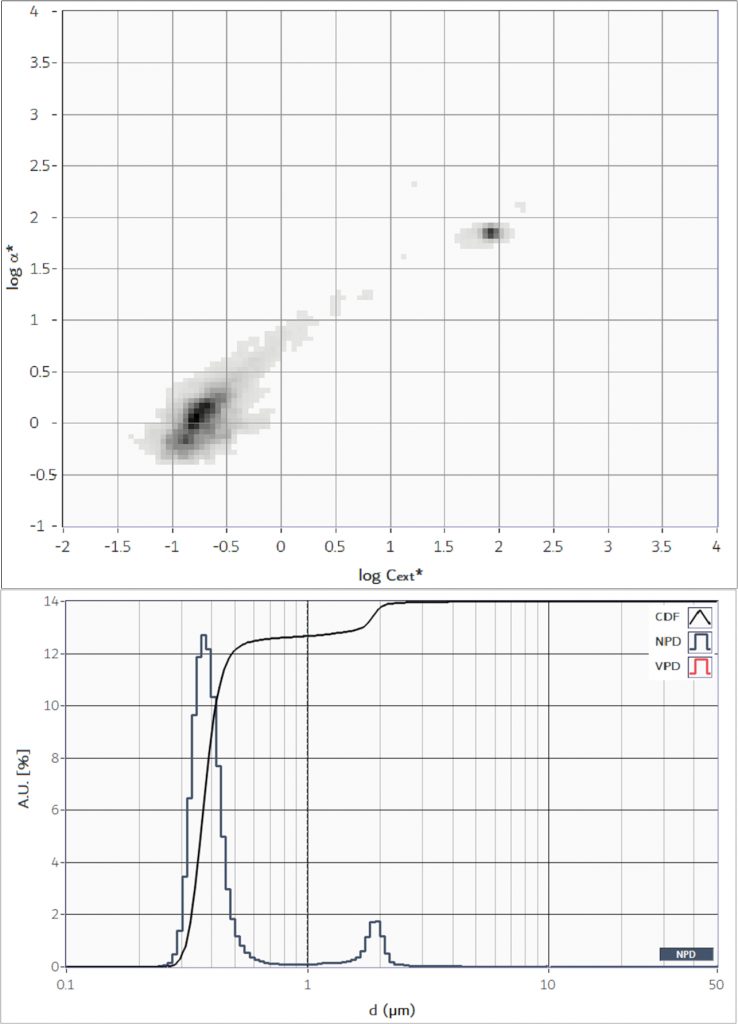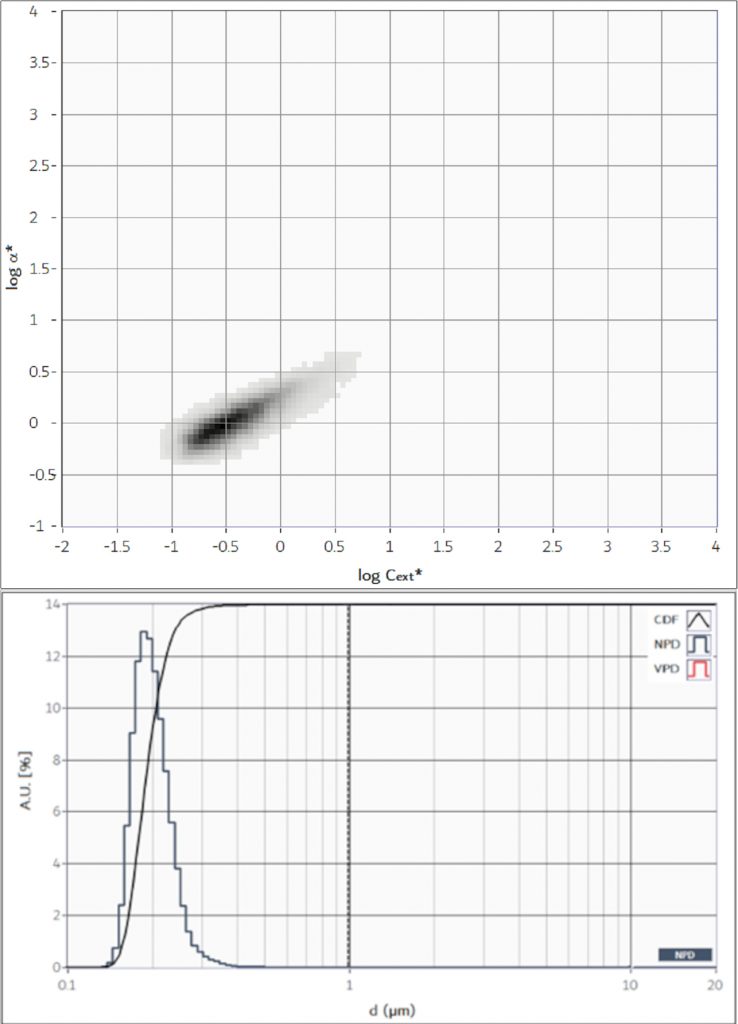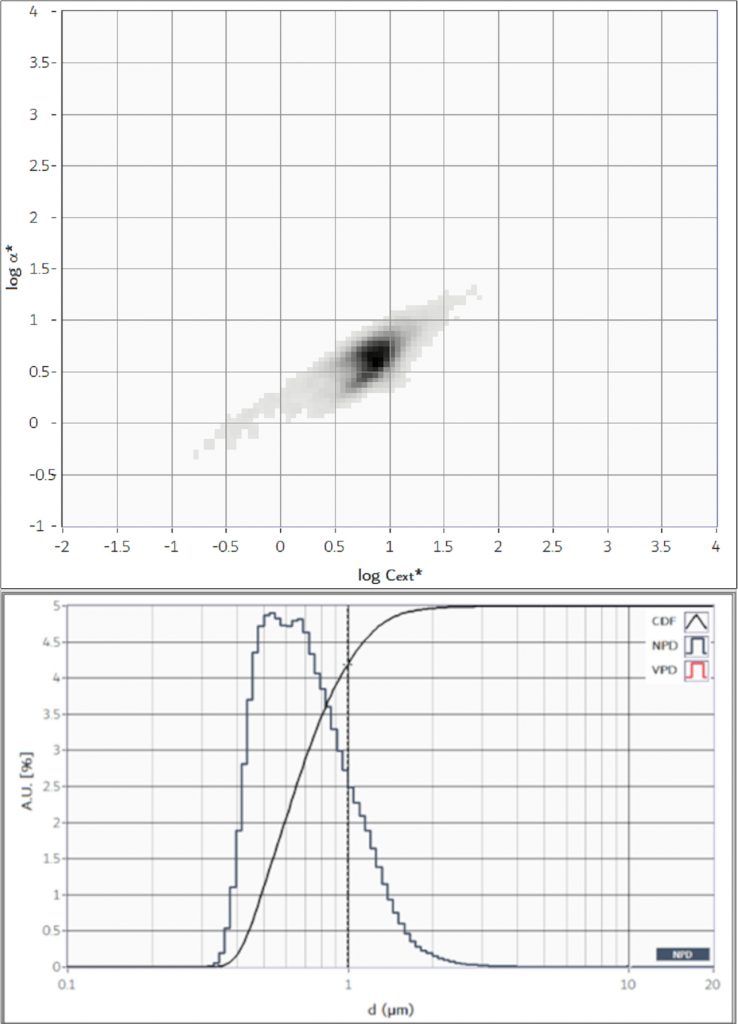[vc_row full_width_row=”true”][vc_column css=”.vc_custom_1469801256433{margin-top: -50px !important;}”][vc_column_text][maxmegamenu location=max_mega_menu_3][/vc_column_text][/vc_column][/vc_row][vc_row][vc_column][vc_column_text css_animation=”fadeInDown”]
Slurries are aqueous dispersions of compact or mesopouros particles required by the most advanced technology for the silicon-based products, but found applications also in a number of industrial processes such as production of compact disks, hard disks and optical surface polishing. The characteristics of the abrasive material, their structure and size distribution typically play an important role in determining their removal properties. CLASSIZER™ family of particle analysers is the perfect solution for charactering both the size distribution, compactners of the mesopouros structure and the presence of solid contaminant or subvisible/submicron-scale aggregates.
[/vc_column_text][/vc_column][/vc_row][vc_row][vc_column width=”1/3″][vc_message message_box_style=”solid-icon” message_box_color=”blue” icon_type=”linecons” css_animation=”fadeInRight” icon_linecons=”vc_li vc_li-bulb”]Example of application: Silica Particles
Commercial silica particles are commonly available on the market. In figures the EOS CLOUDS of a mix of monodisperse 0.3 µm and 2.0 µm spheres is presented. Two separate clouds appear and may be analysed independently. The measured numerical concentrations are 1.4×10^6 ptc/mL for the 0.3 µm sample and 1.3×10^5 ptc/mL for the 2 µm one.
 [/vc_message][/vc_column][vc_column width=”1/3″][vc_message message_box_style=”solid-icon” message_box_color=”blue” icon_type=”linecons” css_animation=”fadeInRight” icon_linecons=”vc_li vc_li-bulb”]Example of application: CeO2 slurry
[/vc_message][/vc_column][vc_column width=”1/3″][vc_message message_box_style=”solid-icon” message_box_color=”blue” icon_type=”linecons” css_animation=”fadeInRight” icon_linecons=”vc_li vc_li-bulb”]Example of application: CeO2 slurry
Cerium oxide (CeO2) is an abrasive largely employed for the chemical-mechanical polishing (CMP) of silicon surfaces. Few microliters of a commercial CeO2 slurry is dispersed in filtered water. SPES/SPES² experimental data are presented in Figure. The EOS software retrieves a refractive index of 2.0±0.4, in agreement with the expected value.
 [/vc_message][/vc_column][vc_column width=”1/3″][vc_message message_box_style=”solid-icon” message_box_color=”blue” icon_type=”linecons” css_animation=”fadeInRight” icon_linecons=”vc_li vc_li-bulb”]Example of application: Diamond Paste
[/vc_message][/vc_column][vc_column width=”1/3″][vc_message message_box_style=”solid-icon” message_box_color=”blue” icon_type=”linecons” css_animation=”fadeInRight” icon_linecons=”vc_li vc_li-bulb”]Example of application: Diamond Paste
A diamond is forever. Natural and synthetic diamonds cover high-quality cutters, chainsaws, drillers, but also polishing and lapping machines. The main advantage over other abrasives is their higher performance in cutting and durability. The EOS software determines a refractive index of 2.4±0.4 in agreement with expected value.
 [/vc_message][/vc_column][/vc_row][vc_row][vc_column][dt_button link=”https://www.eosinstruments.com/publications/” button_alignment=”center” animation=”fadeInDown” size=”big”]Find out more > EOS Application Note AN013 Analysis of Abrasives via SPES Technology[/dt_button][/vc_column][/vc_row]
[/vc_message][/vc_column][/vc_row][vc_row][vc_column][dt_button link=”https://www.eosinstruments.com/publications/” button_alignment=”center” animation=”fadeInDown” size=”big”]Find out more > EOS Application Note AN013 Analysis of Abrasives via SPES Technology[/dt_button][/vc_column][/vc_row]